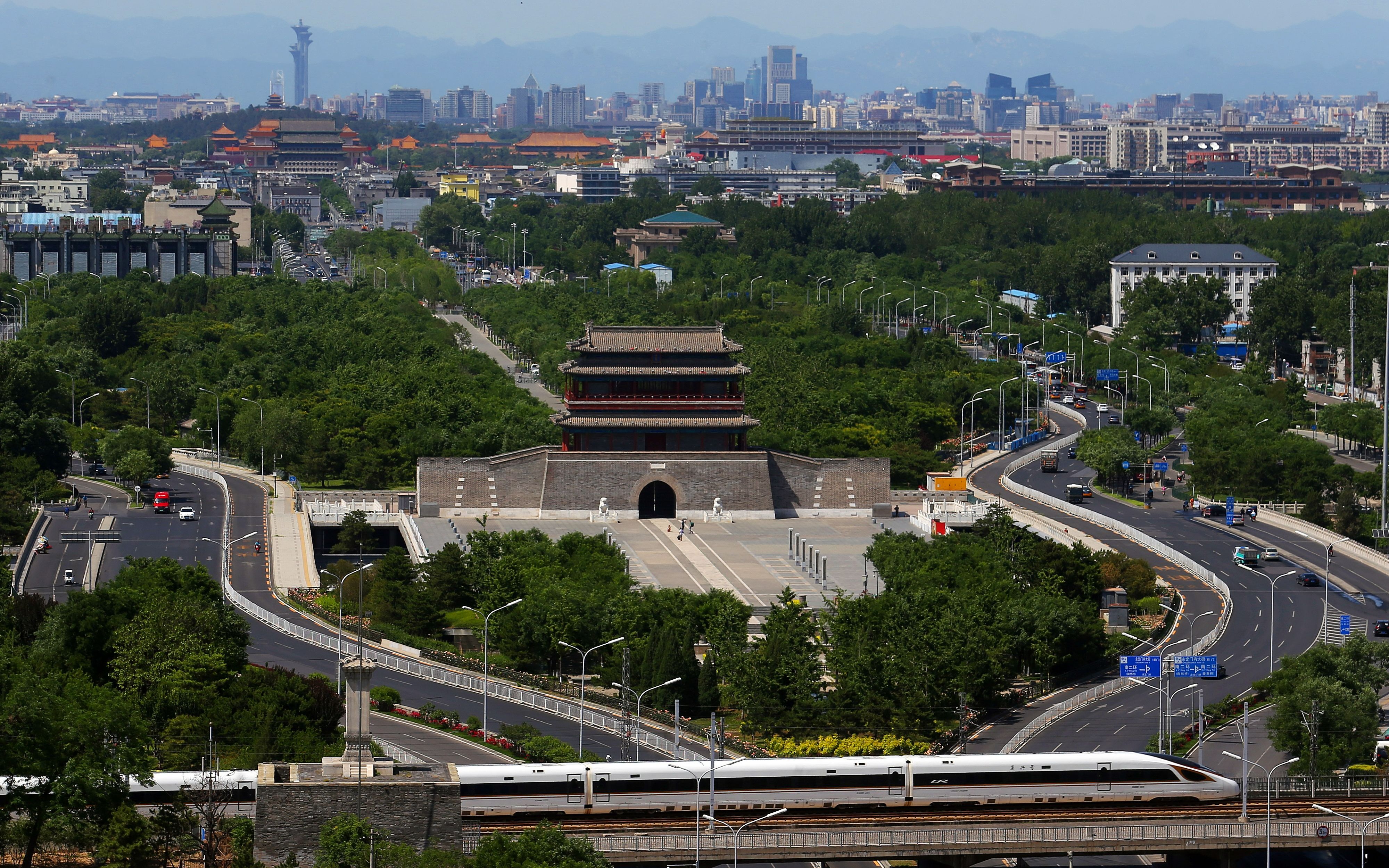Top 10 Historic Sites along Beijing Central Axis

[Photo via The Beijing News]
The Beijing Central Axis, a 7.8-kilometer-long north-to-south line stretching through the center of the city's historical neighborhood, boasts important memorial halls, ceremonial buildings and landmark architecture dating back to the 13th century.
The buildings along both sides of the axis offer a glimpse into the lives of emperors, aristocrats and ordinary folks in history. As a result, it presents a comprehensive picture of traditional Chinese society.
Since China announced the plan to recommend the Beijing Central Axis as the nation's 2024 world cultural heritage application project in August, local authorities have rolled out the regulation on preservation, established a think tank for the application work, and launched competitions for cultural promotion, in a bid to better protect cultural legacies in the region.
Here, China.org.cn examines the top 10 historic sites along the axis and their cultural significance.
#Yongdingmen (Gate of Perpetual Peace)
Initially built in 1553 during the Ming Dynasty (1368-1644), Yongdingmen (Gate of Perpetual Peace) is located at the southernmost end of the Beijing Central Axis and is one of the most classic city gates of Beijing. As part of the cultural heritage preservation projects for the Beijing 2008 Summer Games, the gate tower of Yongdingmen was reconstructed in 2004 based on the architectural style of the Qing Dynasty (1644-1911) during the reign of Emperor Qianlong.
#Temple of Heaven
The Temple of Heaven was built in 1420 and has been inscribed as a UNESCO World Heritage Site since 1998. It was where the emperors of the Ming and Qing Dynasties worshipped heaven and prayed for bountiful harvests. The temple complex comprises a mix of traditional buildings and gardens featuring the Circular Mound Altar and the Imperial Vault of Heaven. Its landscape design symbolizes the ancient Chinese concept of the universe, "heaven is round and earth is square."
#Xiannongtan (Temple of Agriculture)
Directly to the west of the Temple of Heaven, the Temple of Agriculture was the site of imperial sacrifices dedicated to Shennong, the legendary "first farmer" of China, and other ancient mythological figures. It is the largest, highest-ranked and best-preserved site for agricultural rituals in China. The site now boasts the Beijing Ancient Architecture Museum, the country's first museum specializing in collecting, researching and showcasing traditional ancient architectural techniques, arts and history.
#Zhengyangmen (Qianmen)
Located in the southernmost area of Tian'anmen Square, Zhengyangmen, or Qianmen, is the southern gate of Beijing's inner city. As the most well-preserved city gate in Beijing, Zhengyangmen provides a snapshot of the urban layout, military defense, ritual system and architectural style of late feudal society in ancient China. It bears witness to Beijing's history and culture.
#Tian'anmen
Built in 1417, Tian'anmen was the front gate of the imperial city of the Ming and Qing Dynasties. It was opened to the public on Oct. 10, 1925, when the Palace Museum was established. The founding ceremony of the People's Republic of China was held here on Oct. 1, 1949. The symbol of Tian'anmen is part of China's national emblem, in which it symbolizes the unyielding spirit of the Chinese people in their fight against imperialism and feudalism.
#Imperial Ancestral Temple
The Imperial Ancestral Temple was a place where emperors of the Ming and Qing Dynasties paid homage to their ancestors and offered sacrificial prayers when the country faced major incidents. It is by far one of the most well-preserved and large-scale building complexes used for ancestor worship practices by the imperial families. The building not only reflects the brilliant architectural skills of ancient Chinese but also embodies profound ritualistic ideas.
#Altar of Land and Grain (Shejitan)
The Altar of Land and Grain in Zhongshan Park was the site of imperial sacrifices to the gods of land (she) and grain (ji) in the Ming and Qing Dynasties. The emperor received five kinds of colored earth spread over the altar's surface (yellow in the center, green in the east, red in the south, white in the west, and black in the north) as gifts of tribute from subjects of his empire. The gifts, symbolizing that "under heaven, all belong to the emperor," stood for the five elements (metal, wood, water, fire and earth), which constitute the origin of all things.
#Forbidden City
Situated at the center of the Beijing Central Axis, the 602-year-old Forbidden City covers an area of 720,000 square meters and features red walls and yellow glazed roof tiles. Representing the culmination of traditional Chinese palatial architecture, it was inscribed as a UNESCO World Heritage Site in 1987 and is by far one of the world's largest and most well-preserved ancient wooden structures. The Palace Museum was built inside the Forbidden City in 1925. It is one of the few museums in the world that simultaneously boast artworks, architectural designs, historical relics and imperial court culture.
#Jingshan Park
Jingshan Park was the imperial garden for the Ming and Qing Dynasties and the backyard of the Forbidden City. The park's famous peak, Jingshan Mountain, used to be the highest point of the old imperial city of Beijing.
#Bell and Drum Towers
The Bell and Drum Towers, located at the northernmost end of the Beijing Central Axis, were once used to toll the hour for the capital city during the Yuan (1271-1368), Ming and Qing Dynasties.
See more: http://english.beijing.gov.cn/specials/centralaxis/landmarksalongthecentralaxis/index.html

